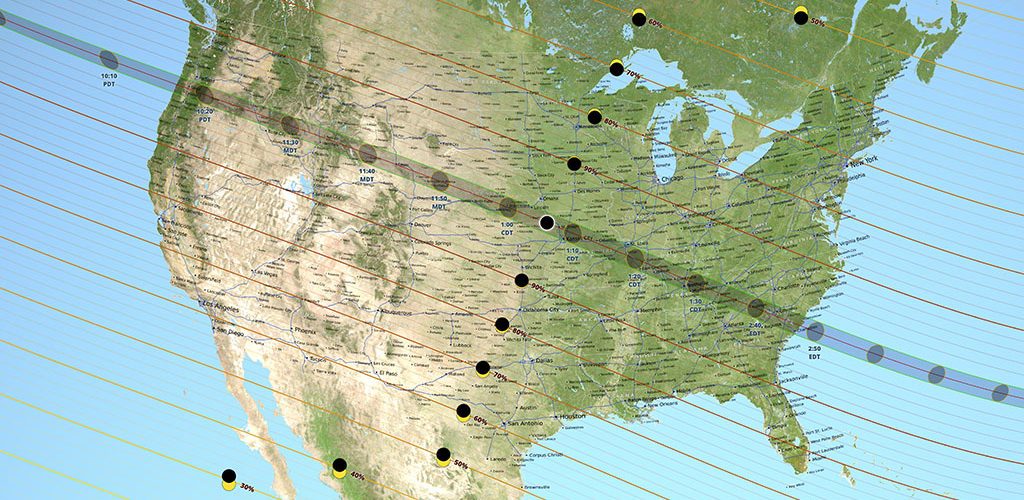
If you are watching the eclipse yourself, keep in mind the risk of looking directly at the sun during the event. The NASA web site will live stream the eclipse and also offers a list of safety guidelines. If you have no luck finding the solar glasses, you may be able to make a last-minute ‘Solar Eclipse Viewer’ to be able to enjoy the event.
People watch the start of #SolarEclipse2017 at Big Summit Prairie ranch in Oregon's Ochoco National Forest pic.twitter.com/E5CuxTqpbl
— AFP News Agency (@AFP) August 21, 2017
WATCH LIVE: Moon almost covering the Sun, as seen from Oregon https://t.co/2WEgTS68VL pic.twitter.com/UwWPPYVnJr
— BNO News (@BNONews) August 21, 2017
During totality, the Moon will eclipse the Sun's photosphere, where the Sun radiates all light in the entire spectrum (but peaks at green)
— Sophia Gad-Nasr (@Astropartigirl) August 21, 2017
But during totality, all that will be visible is the Sun's corona. The corona contains stuff like iron and helium.
— Sophia Gad-Nasr (@Astropartigirl) August 21, 2017
https://twitter.com/FOX10NewsNow/status/899674141241954304

